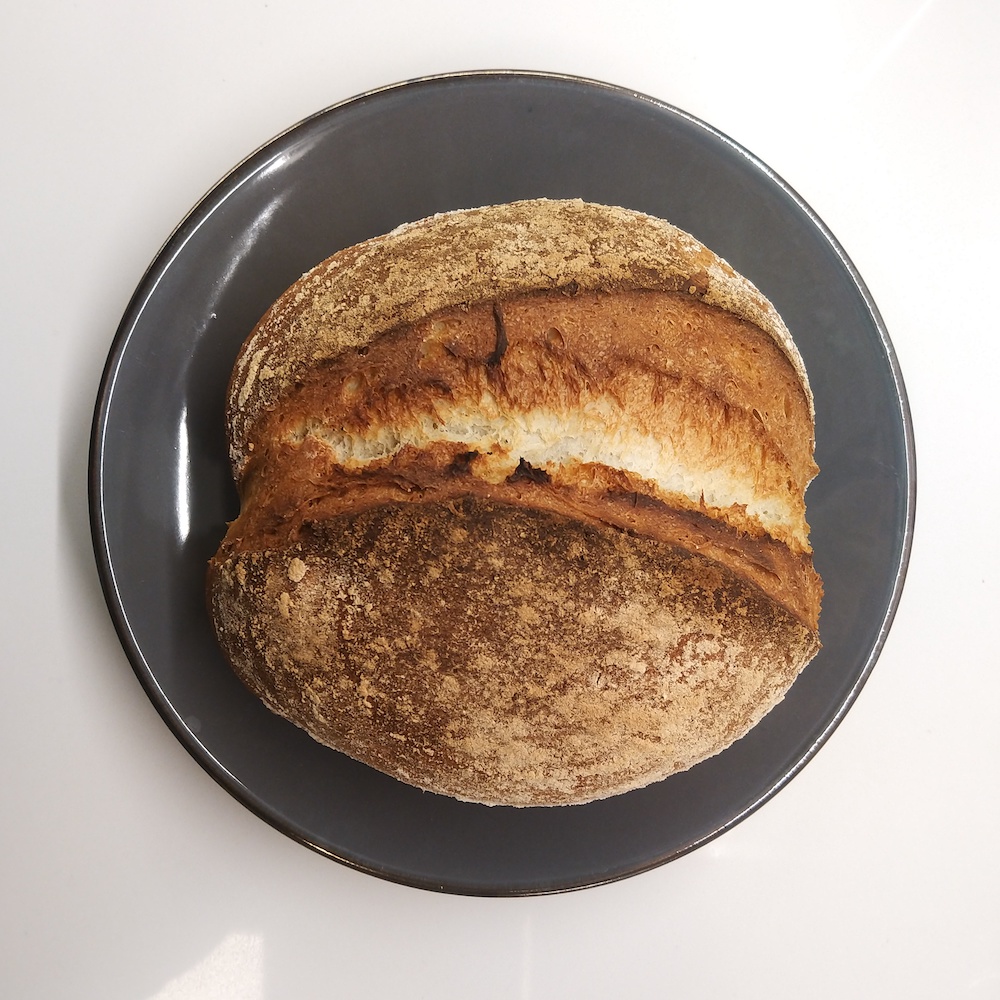Making bread - with kneading, but still easy!
Easy recipe with kneading, still suitable for a daily fresh loaf
Translate here:

This is still really easy - I make this bread very often. You need about 5-10 minutes in the evening to prepare the dough and roughly 40 minutes in the morning (or more if you have the time).
Key success factors are:
- Hydration of the dough: It should not be too high, making it sticky, and not too low, making the dough very hard. In this recipe the hydration is 60%, but depending on your flour higher or lower might be better.
- The amount of yeast and the temperature during the night. The amount of yeast you start with in your dough will grow exponentially (1 cell, 2 cells, 4 cells, 8 cells, 16 cells, ...) with a speed depending on temperature. You should wake up to a grown dough with still growing yeast in the morning. It should not be overfermented (starting to sink again with many small bubbles) or underfermented (not enough growth).
Here is what I do:
- In a bowl with enough space, mix 400 g flour and 4 g of salt and make a little bowl in the middle of the flour
- Pour 250 g of water in the bowl of the flour and add 0.5 teaspoons of yeast (2 g) (the dried one, can also be 1 teaspoon depending on how fast you'll find it rises, start with 0.5) and let it sit for about 15 minutes to dissolve the yeast.
- Mix the yeast, water & flour mixture and start kneading with your left hand while you hold the bowl with your right. Keep doing this until your dough takes up all the dry fluor and you end up with a nice elastic ball of dough. If it's not elastic but hard, try adding more water. If it's too sticky, try adding less water next time and now add a bit more flour.
- Cover with a a plate (or cellophane) for about 10 hours until it has risen a lot in volume (a few hours more or less do not matter, it mostly matters whether it got significantly more volume)
- The next morning, turn on your oven to about 250-275 degrees C. Prepare a backing tray with a bit of parchment paper. Drop in the dough and let it sit around while your oven warms up. Cut your bread with a sharp knife to create a place where it opens up and put it in the oven. For a nicer brown and crunchier crust, spray a bit of water in the oven (not on the bread) to create a humid environment.
- After about 25 minutes, it's Done! take it out of the form and let it cool.
I often prepare the dough before going to bed. I warm up the oven slightly (lowest setting is 50 degrees C), then turn it off and put the dough mixture inside until the next morning. In this warm environment it will rise nicely, which helps when your kitchen is cold (like in England).
It sounds like a lot of work, but when you have done it once it's quite easy. Check out the following table with the step and how little time it takes.